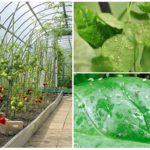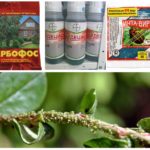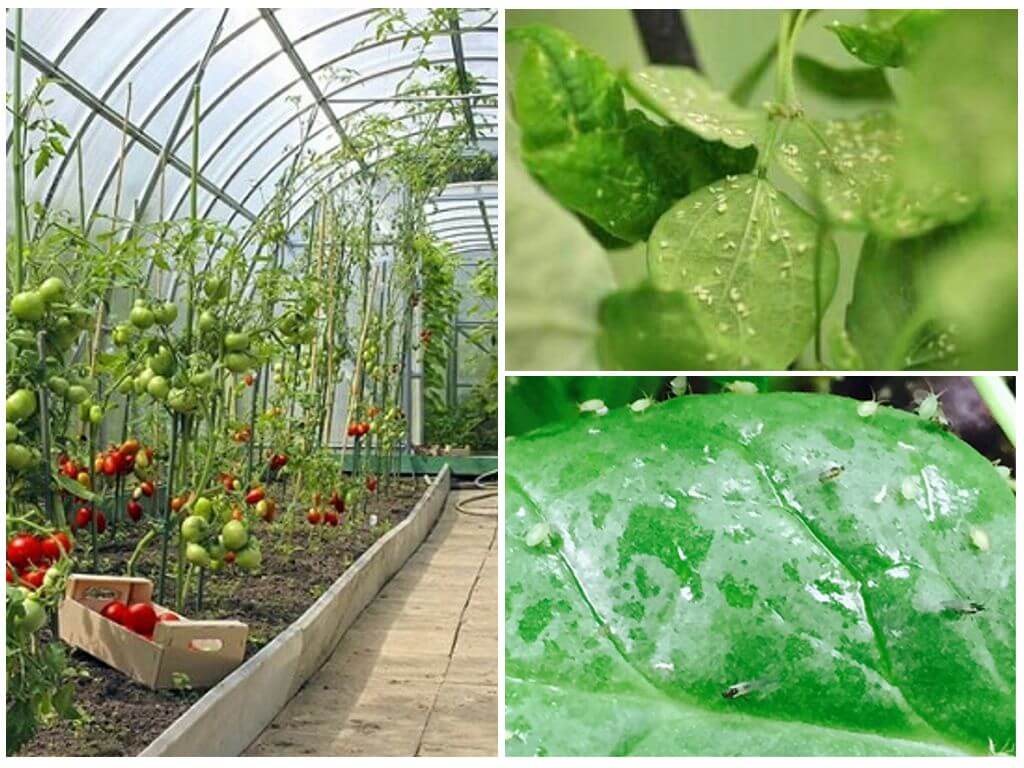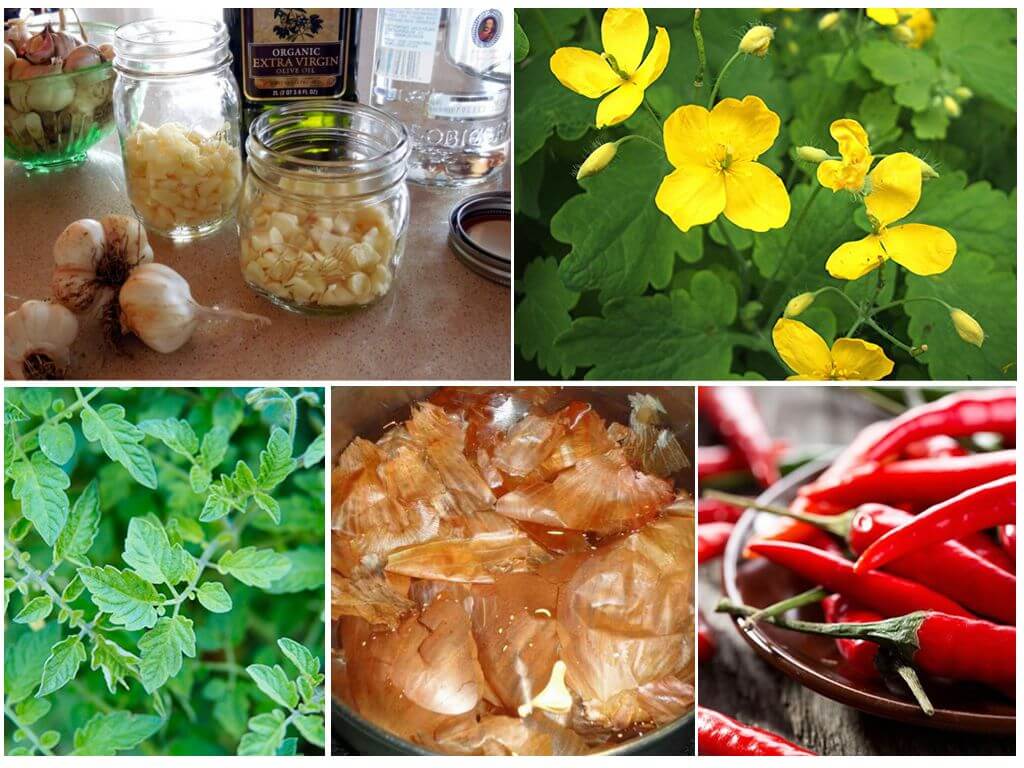How to deal with aphids in the greenhouse
Content
- Aphid in the greenhouse
- Chemical methods for the destruction of aphids
- Folk recipes from pests
A greenhouse is a design that makes it possible to grow and feast on fragrant tomatoes, cucumbers, bell peppers or eggplants in early spring. The joy of observing fruit ripening and filling with juice can be overshadowed by the appearance of aphids, a dangerous pest of horticultural crops.Feeling at ease in the greenhouse, the insect multiplies rapidly and damages the entire crop. Therefore, the question of how to get rid of aphids in the greenhouse is relevant for each vegetable grower who is faced with such a problem.
Varieties of greenhouse aphids
Aphid It is a small (up to 5 mm) insect with thin legs and rather tender covers. Thanks to the piercing and sucking mouth apparatus, she uses the cell sap of plants as food. As a result, the leaves begin to wither and sag. Young shoots are deformed, the surface of leaf plates becomes sticky and shiny. This leads to shedding of the ovaries and inhibition of plant growth.
On a note!
Usually in greenhouses there is potato, greenhouse, melon, root and sometimes currant aphid. Representatives of all these species are able to winter in greenhouse conditions and even develop.
Why in the greenhouse start aphid
Many gardeners are wondering what makes the plant louse in the greenhouse. However, it is such premises with a raw microclimate that favor not only the growth of seedlings, but also the spread of pests. Aphids can penetrate into the greenhouse structure, being in the ground, on the handle or with organic dressing, which is treated seedlings.There is a chance she fly into and during the airing.
Having found a malicious insect, you must immediately begin to eliminate it. Otherwise, within a few days, all the plants growing in the greenhouse will be affected.
Methods of struggle
Fighting aphids in the greenhouse can be carried out in various ways:
- mechanical;
- biological;
- chemical;
- with help folk remedies.
Mechanical impact
This method involves collecting insects by hand. To this end, the pest-damaged buds, the leaves are cut off and burned. Such a process requires a certain amount of time, patience and effort, since it is very tiring and not always effective to deal with aphids in the greenhouse in this way. After all, it is very easy to miss the leaf on which the whole family of pests lives. Therefore, it is used only with a slight infection of plants in the greenhouse.
Biological method
Another method that is used in the fight against aphids. It is enough to put in the greenhouse ladybugwhich is capable of destroying more than one hundred aphids in a day.
On a note!
Do not refuse to eat smolder very voracious and agile predatory gall midges.They live in peat fillers, which can be bought at any specialty store.
Chemical method
To get rid of greenhouse pests, you can use toxic chemicals. They are used if the extent of the lesion exceeds a quarter of all plants. Chemicals are in great demand among gardeners:
Moreover, each tool has an effect on the specific type of aphids. Therefore, before buying a pesticide, it is advisable to find out how the pest is affected seedlings. In addition, some drugs can be used during the growing season, while others no later than a month before the formation of the fruit.
Chemical agents have a negative effect not only on harmful insects, but also on the soil, accumulating in it. After that, along with water, they are absorbed by vegetables, which then a person eats. Therefore, many gardeners are trying to get rid of aphids folk remedies.
Folk recipes
Folk remedies for aphids in the greenhouse are completely harmless. They have no side effects.they decompose much faster and, on a minor scale, the lesions are no less effective than pesticides. Most often used:
- ammonia;
- soda;
- milk and iodine;
- Coca Cola;
- vinegar;
- mustard;
- vodka;
- Green soap;
- Birch tar;
- tobacco;
- boric acid.
Garlic
One of the effective ways to combat smoldering is garlic brew. To make it:
- 0.5 kg of garlic is crushed to a mushy consistency, which is mixed with 3 liters of water;
- the mixture is infused for 5 days;
- then filtered and used for spraying infected plants at the rate of 60 g of concentrated infusion per 10 liters of water.
You can cook the infusion in another way. Take crushed garlic and water in equal quantities, place in a hermetically sealed container and leave for 10 days in a warm place. After that, strain and use for irrigation of plants damaged by smoldering in the proportion of 25 ml of concentrate per bucket of water.
Celandine
Equally effective against greenhouse aphids is infusion of celandine. The composition of 300 g of dry leaves and 10 liters of water is kept for 2 days, filtered and used for irrigation.
Wormwood, calendula, chamomile or nettle have similar properties.
Soap-wood solution
Helps to quickly get rid of aphids soap-woody infusion. On a bucket of water you need a piece laundry soap (grate) and 2 tbsp. l ashes. All ingredients are mixed, ensuring the formation of a homogeneous solution, after which it is used for its intended purpose.
Herbal infusions
A good result against greenhouse pests gives the use of herbal infusions. For their preparation they use onion peel, bitter pepper, potato or tomato tops.
On a note!
The only important condition that should be observed when using folk remedies is regular spraying. One-time processing will not give proper results.
Periodic inspection of beds will help prevent the spread of aphids in the greenhouse. It will not be superfluous to remove plant residues (tops, roots, fallen leaves) and weeds.











